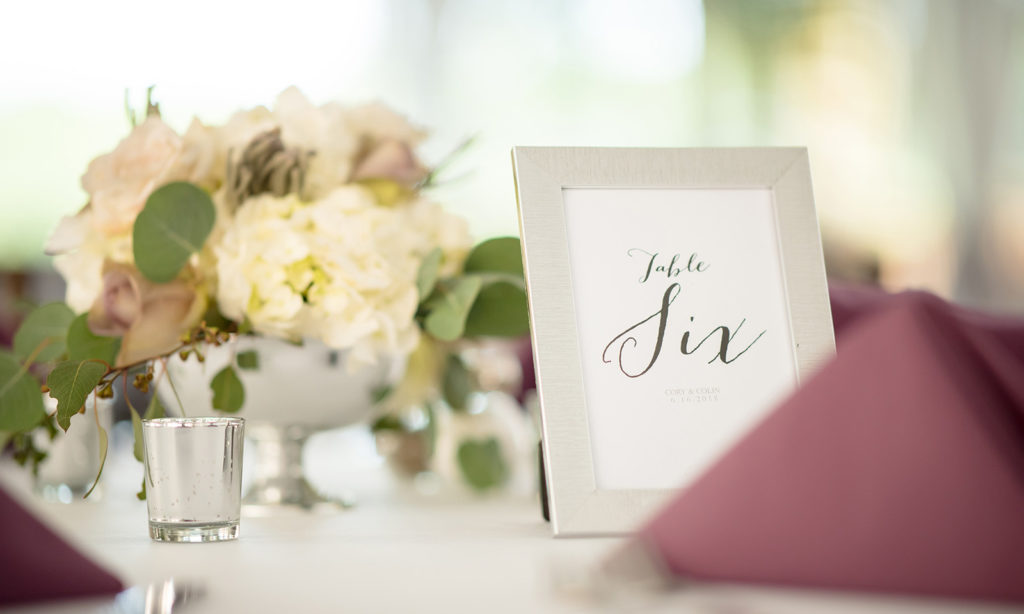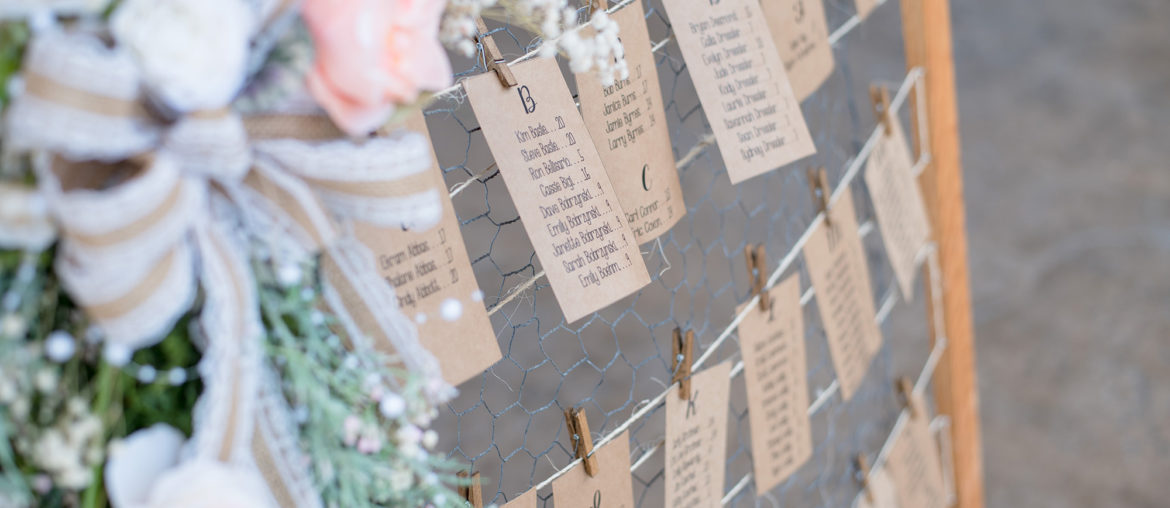The layout of your dinner party can play a big part of the atmosphere of your wedding reception. While having assigned seating isn’t mandatory, most couples do choose to have a wedding seating plan.
Creating a seating chart can seem daunting at first, but it can actually be quite fun. We take a look at some of the things to consider and how to make planning enjoyable.
Choose Your Table Layout
Before you can place your guests you’ll need to decide the size and shape of your tables. Do you want long or round tables? How many people at each? Check out some ideas to help you decide if you should have round or long tables at your wedding.
Categorise Guests In Groups
A good way to start is to start putting your guestlist into groups based on how you know them. For example family members, uni friends, high school friends, work colleagues, friends of your parents, etc. This will help give you an idea of who already knows each other and start to arrange by guest’s ages and interests.
Consider The Placement
Think about the placement of certain people in the room. For example, elderly guests probably want to sit somewhere that’s comfortable for them. This could be a spot where they can make a smooth early exit if need be, or away from the speakers or musicians playing during dinner.
Same applies to placement of tables around the dancefloor – think about which guests will want to be part of the action and those that would prefer a quiet spot further back.

Don’t Play Cupid
You may think it’s a good idea placing your single sister on the same table as the cute guy from your work. But guaranteed, those sat at ‘the single table’ won’t think it’s much fun. It can obvious and awkward. People will gravitate towards others throughout the day and night anyway, the singles don’t need to be forced together.
Place Guests With People They Get Along With
Most people will mingle and meet new people throughout the evening. The idea of putting strangers together so they can to know each other isn’t necessary. Most people want to sit with their friends and/or family and will have a much better time with those they know and like. Strangers can get to know each other during cocktail hour, on the dance floor or during games.
Kids Table
Many people love the idea of a kids table. If there are several kids at your wedding, a children’s table gives them to opportunity to mix with other kids while mum and dad can have adult conversations. Make sure to keep the parents close enough to intervene if you start seeing their meals go flying! It’s also a good idea to have activities such as colouring in to keep them occupied.
Get Your Parents To Help
If you have no idea where to sit family friends or relatives, get your mum or mother-in-law to help arrange those tables. They’ll surely have an opinion on who should sit where, and they’ll probably be delighted to help.
Make a Digital or Physical Seating Chart
A great way to get the process started is to draw up a big floor/table plan, create name tags and open a bottle of wine. You and your fiancé can have a few drinks and play pin-the-person-on-the-table. It will take some rearranging and trial and error but you’ll get there.
There are also some great tools for creating a digital wedding seating chart which lets you design your layout.
Assign Tables
Some couples are choosing to have their seating plan a little more casual by assigning guests to tables rather than seats. The same thought process of grouping guests together still applies, it just means that they can choose where at the table to sit themselves.






